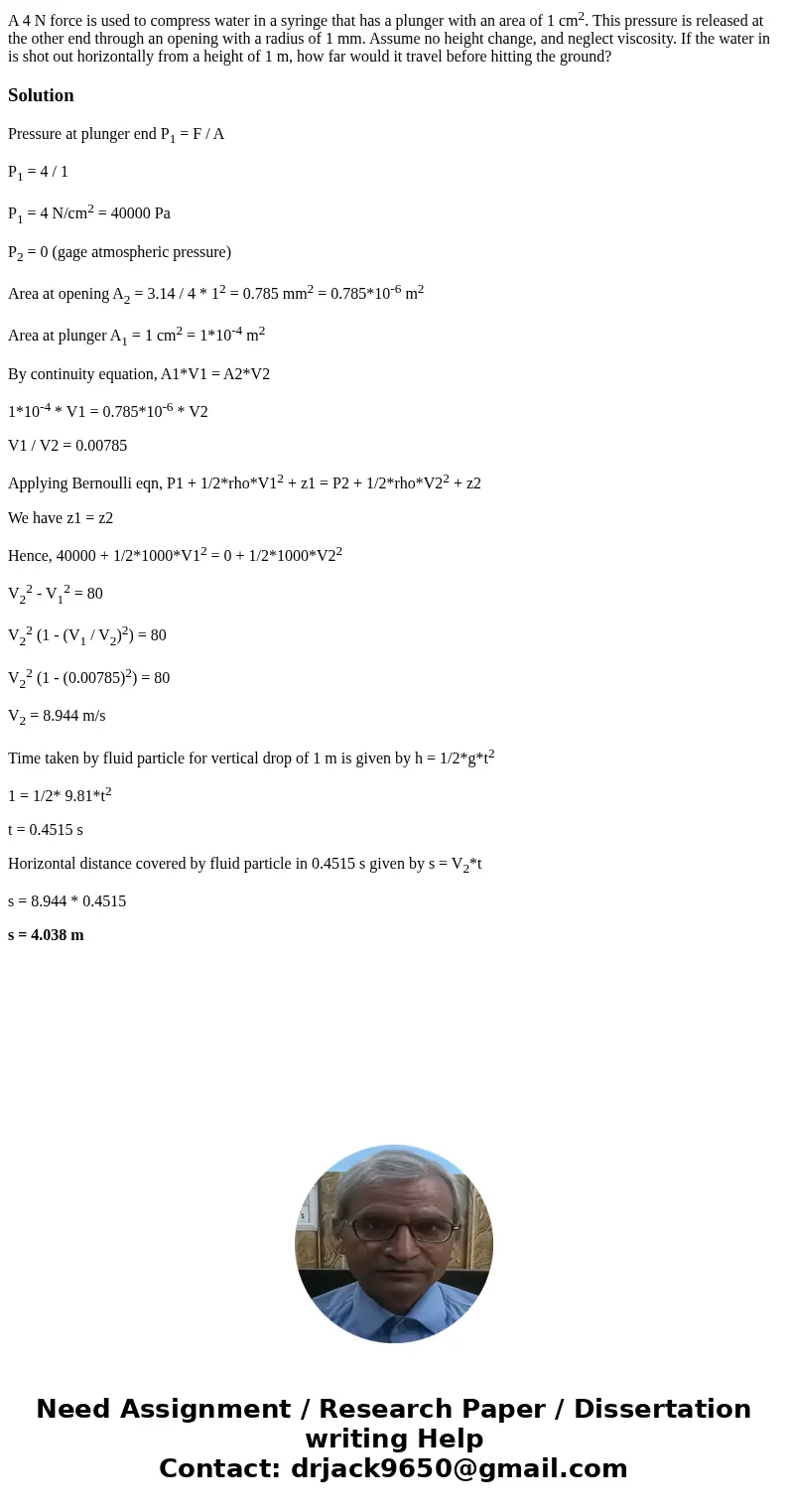A 4 N force is used to compress water in a syringe that has
A 4 N force is used to compress water in a syringe that has a plunger with an area of 1 cm2. This pressure is released at the other end through an opening with a radius of 1 mm. Assume no height change, and neglect viscosity. If the water in is shot out horizontally from a height of 1 m, how far would it travel before hitting the ground?
Solution
Pressure at plunger end P1 = F / A
P1 = 4 / 1
P1 = 4 N/cm2 = 40000 Pa
P2 = 0 (gage atmospheric pressure)
Area at opening A2 = 3.14 / 4 * 12 = 0.785 mm2 = 0.785*10-6 m2
Area at plunger A1 = 1 cm2 = 1*10-4 m2
By continuity equation, A1*V1 = A2*V2
1*10-4 * V1 = 0.785*10-6 * V2
V1 / V2 = 0.00785
Applying Bernoulli eqn, P1 + 1/2*rho*V12 + z1 = P2 + 1/2*rho*V22 + z2
We have z1 = z2
Hence, 40000 + 1/2*1000*V12 = 0 + 1/2*1000*V22
V22 - V12 = 80
V22 (1 - (V1 / V2)2) = 80
V22 (1 - (0.00785)2) = 80
V2 = 8.944 m/s
Time taken by fluid particle for vertical drop of 1 m is given by h = 1/2*g*t2
1 = 1/2* 9.81*t2
t = 0.4515 s
Horizontal distance covered by fluid particle in 0.4515 s given by s = V2*t
s = 8.944 * 0.4515
s = 4.038 m

 Homework Sourse
Homework Sourse